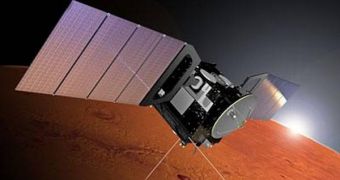Since 2004, when the first traces of the gas were discovered on the Red Planet, the scientific community has been in frenzy. Once thought to be an inhospitable, barren landscape filled with desert, our neighboring planet is now considered to be either occupied by life forms, or as still having volcanic activity. Regardless of which of these theories turns out to be true, the find would be remarkable. As the European Space Agency's (ESA) space probe Mars Express neared the planet in December 2003, it noticed traces of the gas, which puzzled researchers, ScienceDaily informs.
“Methane was a surprise, we were not expecting that,” explains Agustin Chicarro, the ESA Mars lead scientist. Italian astronomer Vittorio Formisano, who is an expert at the Istituto di Fisica dello Spazio Interplanetario CNR, in Rome, was the leader of the team that made the initial discovery. The readings were collected using the spacecraft's e Planetary Fourier Spectrometer (PFS) instrument, which only certified that the gas exists in the Martian atmosphere, alongside carbon dioxide and water vapors. While the orbiter was en route, two astronomy teams used ground-based telescopes to peer at the planet's atmosphere, and determined that methane was a definite possibility.
But scientists were most puzzled when they learned that, instead of taking about 300 years to disappear, as studies had hinted, the methane concentrations were gone by 2006, which indicated that something else was going on in the Martian atmosphere. “We thought we understood how methane behaved on Mars but if the measurements are correct then we must be missing something big,” argues Universite Pierre et Marie Curie expert Franck Lefevre. The French researcher is also a member of Mars Express’ SPICAM instrument team.
After devising intricate computer simulations to account for the rapid disappearance of the methane, the team concluded that “Something is removing the methane from the atmosphere 600 times faster than the models can account for. Consequently, the source must be 600 times more intense than originally assumed, which is considerable even by Earth’s geological standards.” One possible explanation would be that hydrogen peroxide in the air is destroying the methane, which implies that organic molecules will in the future be extremely difficult to find.

 14 DAY TRIAL //
14 DAY TRIAL //